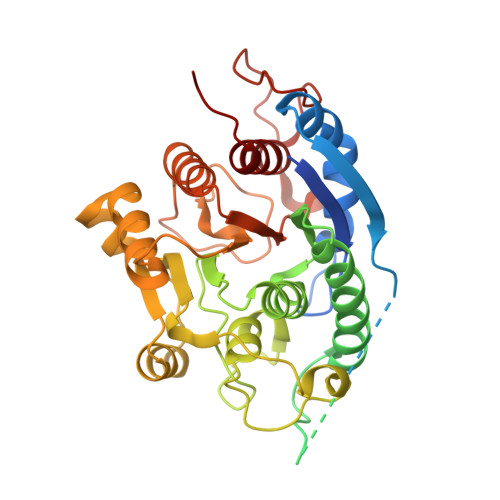Crystal structure of arginase from Plasmodium falciparum and implications for L-arginine depletion in malarial infection .
Dowling, D.P., Ilies, M., Olszewski, K.L., Portugal, S., Mota, M.M., Llinas, M., Christianson, D.W.(2010) Biochemistry 49: 5600-5608
- PubMed: 20527960
- DOI: https://doi.org/10.1021/bi100390z
- Primary Citation of Related Structures:
3MMR - PubMed Abstract:
The 2.15 A resolution crystal structure of arginase from Plasmodium falciparum, the parasite that causes cerebral malaria, is reported in complex with the boronic acid inhibitor 2(S)-amino-6-boronohexanoic acid (ABH) (K(d) = 11 microM). This is the first crystal structure of a parasitic arginase. Various protein constructs were explored to identify an optimally active enzyme form for inhibition and structural studies and to probe the structure and function of two polypeptide insertions unique to malarial arginase: a 74-residue low-complexity region contained in loop L2 and an 11-residue segment contained in loop L8. Structural studies indicate that the low-complexity region is largely disordered and is oriented away from the trimer interface; its deletion does not significantly compromise enzyme activity. The loop L8 insertion is located at the trimer interface and makes several intra- and intermolecular interactions important for enzyme function. In addition, we also demonstrate that arg- Plasmodium berghei sporozoites show significantly decreased liver infectivity in vivo. Therefore, inhibition of malarial arginase may serve as a possible candidate for antimalarial therapy against liver-stage infection, and ABH may serve as a lead for the development of inhibitors.
Organizational Affiliation:
Roy and Diana Vagelos Laboratories, Department of Chemistry, University of Pennsylvania, Philadelphia, Pennsylvania 19104-6323, USA.






















